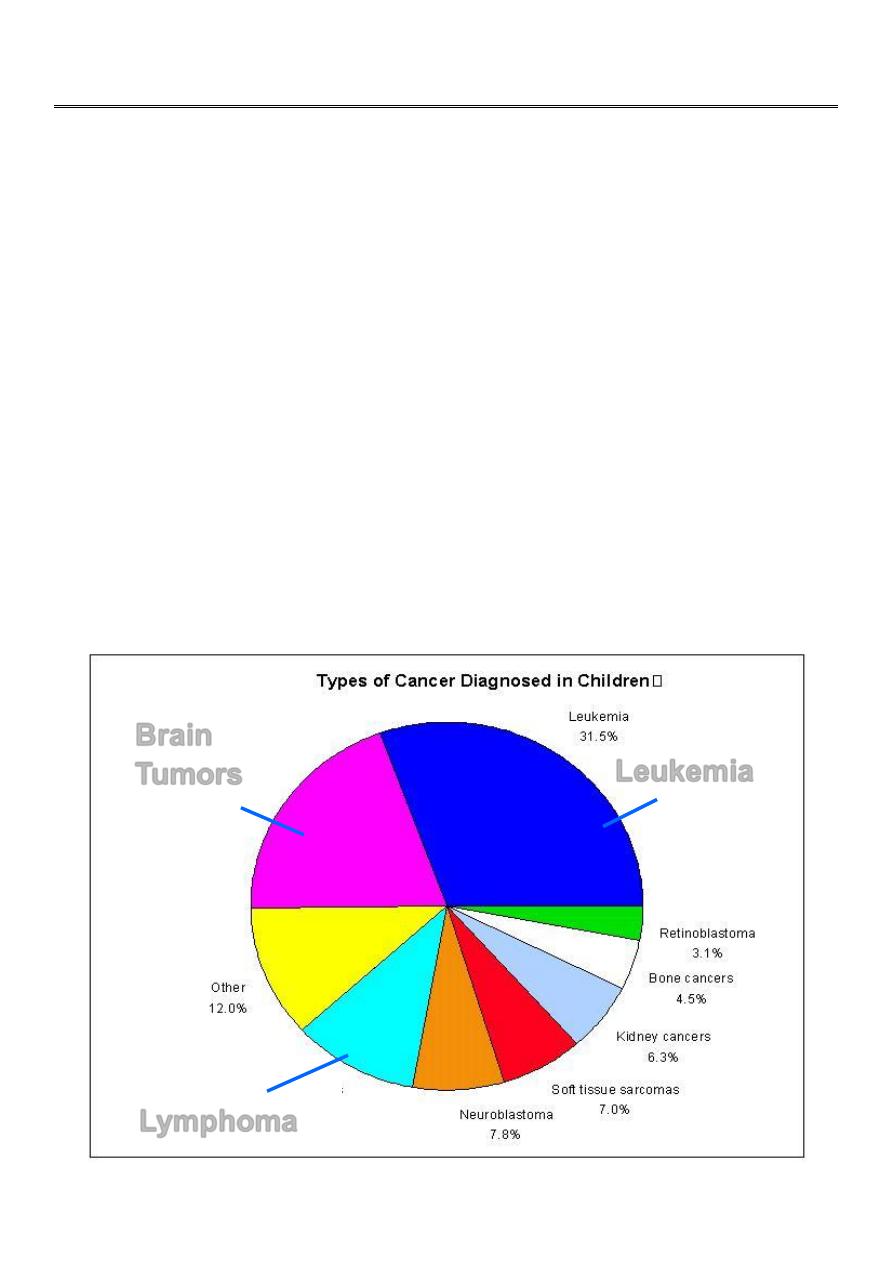
1
Fifth stage
PEDIATRIC SURGERY
Lec-9
د.عبدالرحمن
1/5/2016
PEDIATRIC ONCOLOGY
Leukemia is the most common childhood cancer
Brain tumors are second most common
Lymphomas are the third most common
Then solid tumors outside the CNS
◦ Neuroblastoma - neural crest derived
◦ Wilms - renal tumors and syndromes
◦ Bone tumors
◦ Rhabdomyosarcoma - soft tissue sarcomas
◦ Sacrococcygeal teratoma
Brain
Tumors
Leukemia
Lymphoma
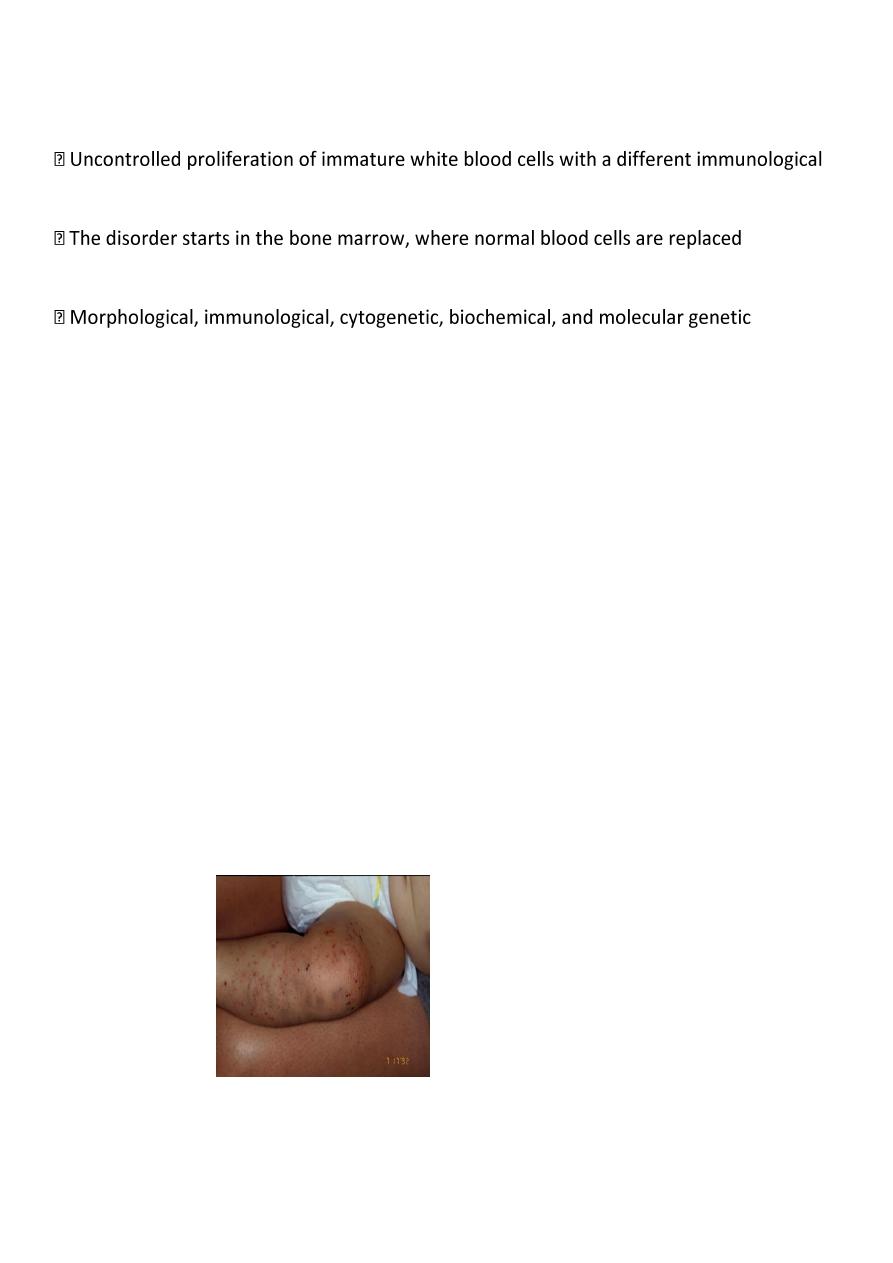
2
Leukemias
Definition and General Characteristics
subtype which is lethal within 1–6 months without treatment
by
leukemic cells
factors characterize the subtypes with various responses to treatment
Leukemia: Signs and Symptoms
Bone marrow infiltration
◦ Anemia
Pallor, lethargy
Dyspnea,
murmur
◦
Platelets
Bleeding, petechiae, purpura
◦ Neutropenia
Fevers and infections
◦ Bone pain
Limp,
walking, irritability
Extramedullary spread
◦ Lymphadenopathy
◦ Hepatosplenomegaly
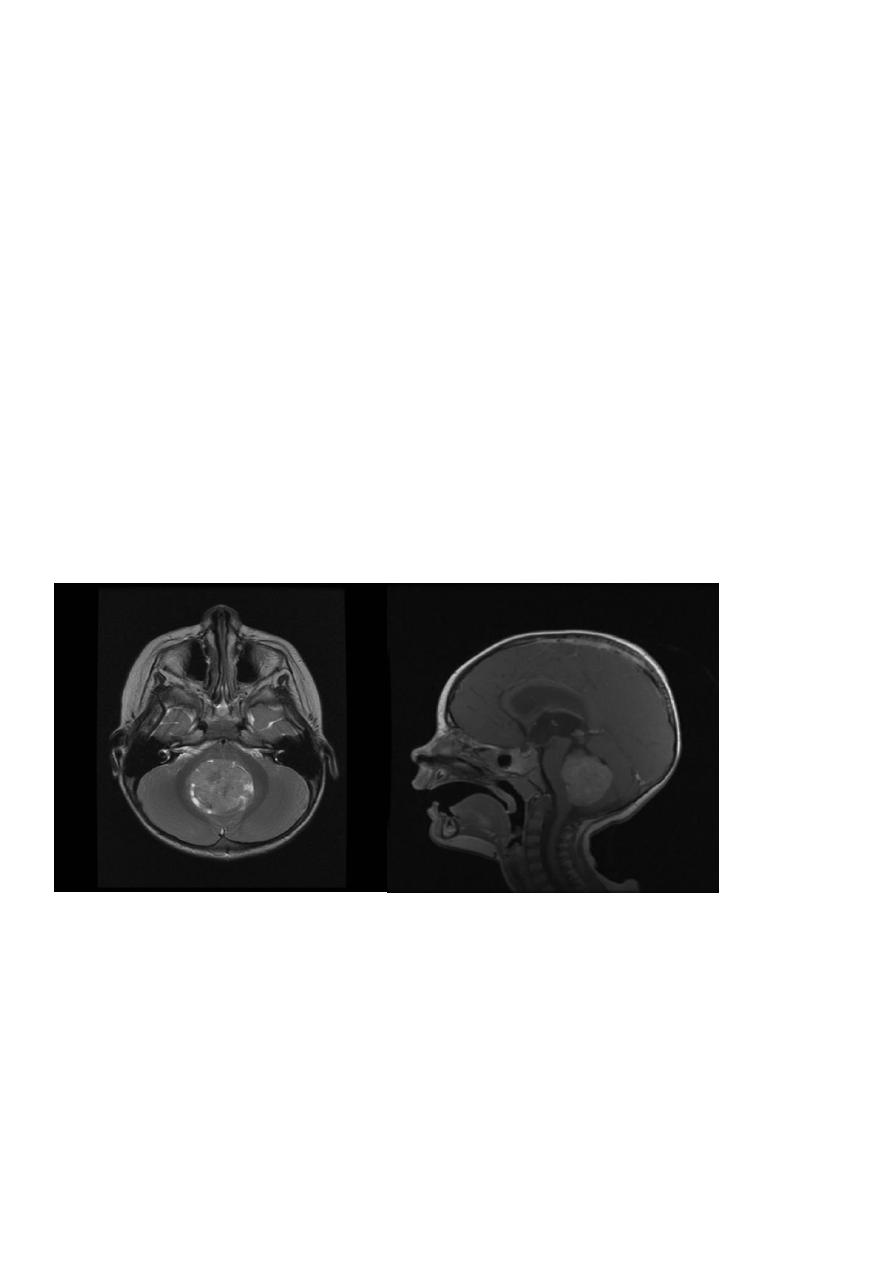
3
◦ Orthopnea, cough
mediastinal mass
tracheal compression
◦ Facial nerve palsy
◦ Testicular enlargement
◦ Skin lesions
◦ Gingival hypertrophy
Fever of malignancy
CNS Tumors
MRI
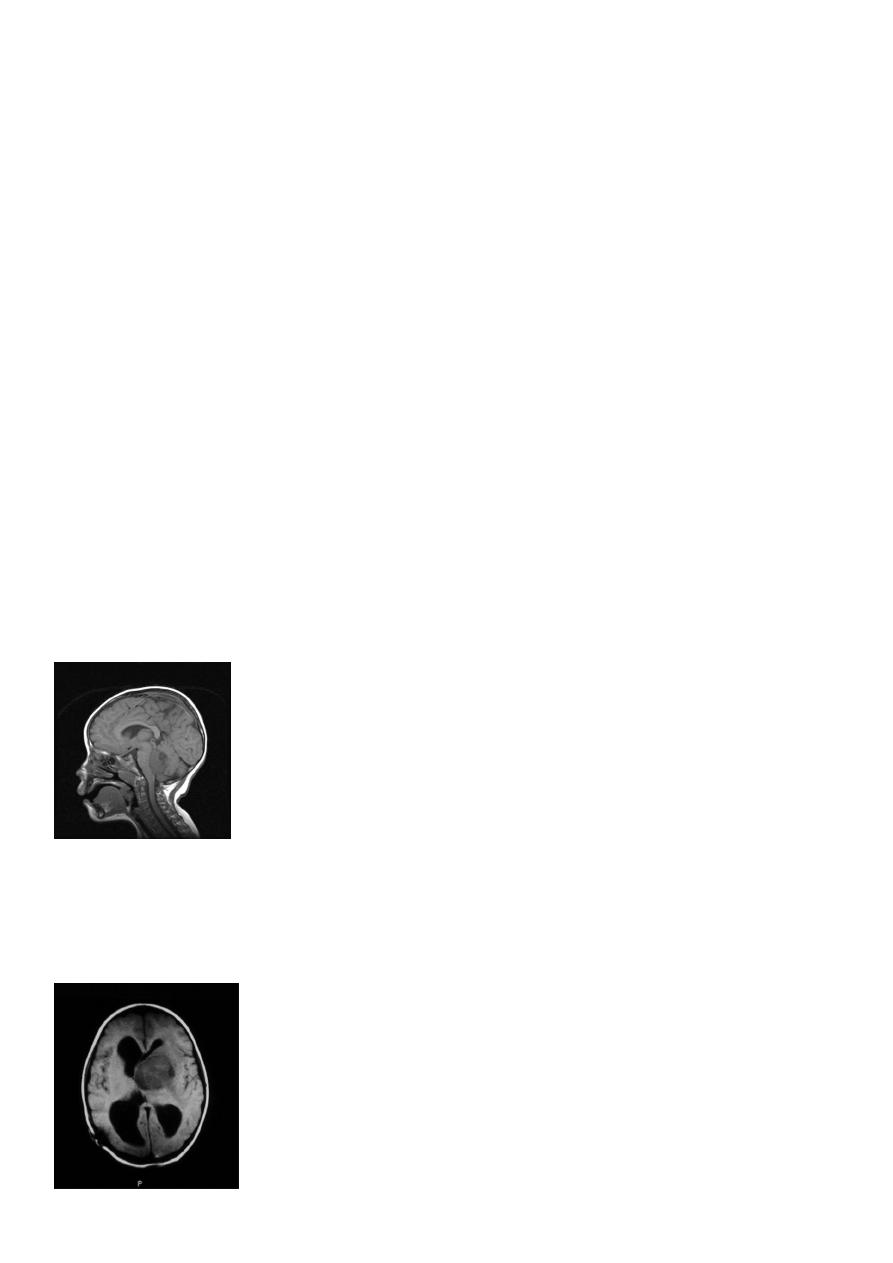
4
Brain Tumors of Childhood
Histogenesis:
* Cell of origin:
glial, neural, primitive, choroid, mixed
* Location:
posterior fossa: 70%
supratentorial: 30%
* Clinical presentation:
location
age
type and grade of the tumor
Brain Tumors of Childhood
Infratentorial
70%
esp. < 6 y/o
Supratentorial
30%
esp. > 8 y/o

5
Symptoms may include:
◦ Increased intracranial pressure
secondary to obstruction of CSF at aqueduct
hydrocephalus (infants), headache, papilledema, vomiting
◦ seizures
◦ focal neurological deficits
◦ hormonal changes (pituitary adenoma)
◦ visual changes (diplopia, field defects)
pressure on optic chiasm
Lymphomas
Childhood Lymphomas
Signs and Symptoms depend on:
◦ Lymphoma subtype
Hodgkin’s Disease (HD)
Non Hodgkin’s Lymphoma (NHL)
* Lymphoblastic
* Burkitt’s
* Large Cell lymphoma
◦ Location

6
Presentation of Hodgkin’s Disease
Age: adolescents >> young child
Painless lymphadenopathy
◦ Progresses over weeks
months
Location
◦ Cervical/supraclavicular LNS
unilateral or bilateral
◦ Mediastinal ± hilum
◦ LNs below diaphragm and spleen
◦ Liver, lung, bone marrow
Systemic symptoms
◦ Fevers
◦ Night sweats
◦ Weight loss
◦ Pruritus
◦ Superior Mediastinal Syndrome (SMS)
◦ Orthopnea, SOB, strider, hypoxia
◦ Tracheal
◦ Bronchial
◦ Cardiac
Presentation of Non Hodgkin's lymphoma
Lymphoblastic lymphoma
95%
“B” symptoms
25%
compression
= Oncologic Emergency
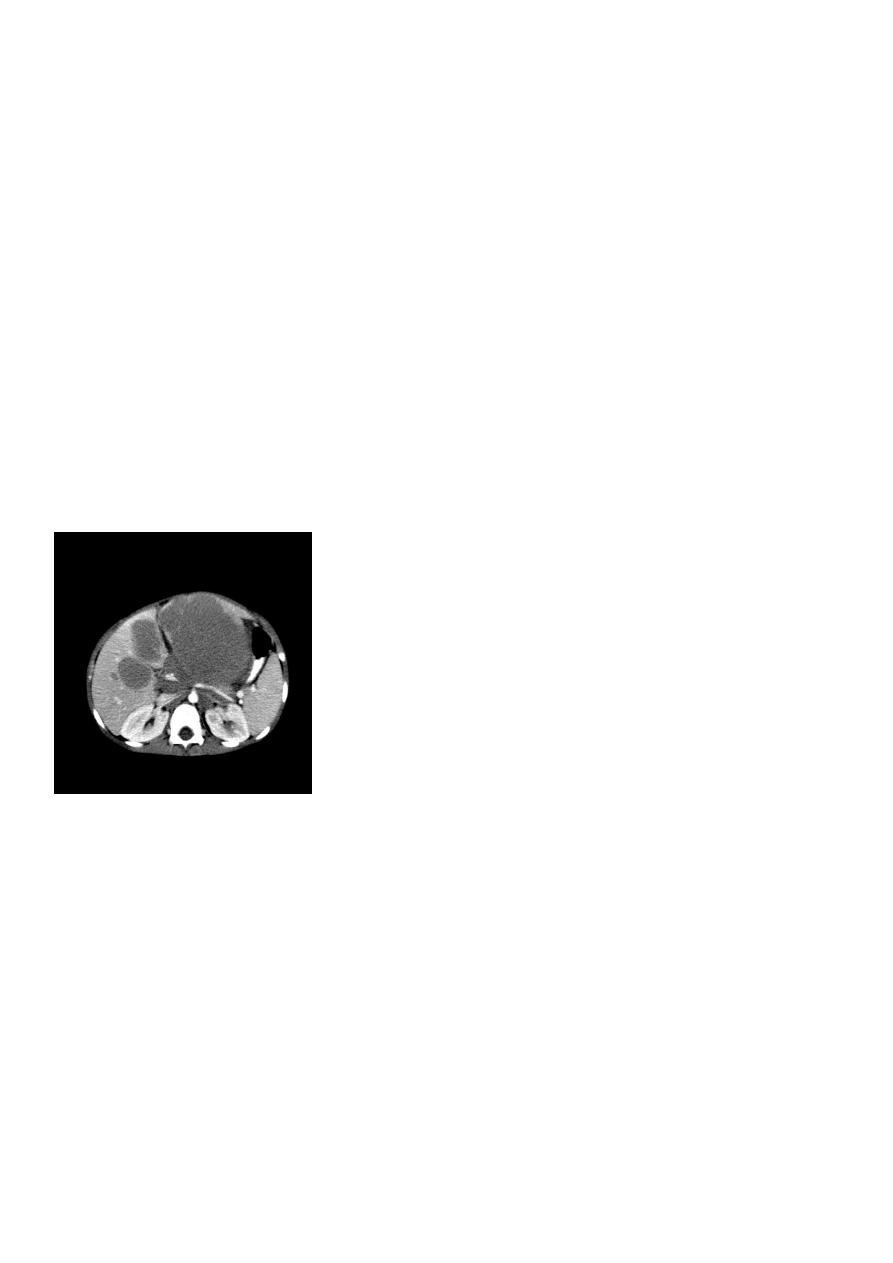
7
Burkitt’s Lymphoma
B-cell origin
> 5 y/o
Abdominal mass
◦ Large mass + LNs
◦ Terminal ileum, Cecum or appendix
Jaw
Tumor lysis syndrome
◦ Uric acid, phosphorus, creatinine
◦ Treatment can precipitate renal failure
= Oncologic Emergency
Other Abdominal Tumors
Malignant Abdominal Masses
Most common:
Burkitt’s lymphoma
Neuroblastoma
Wilms Tumor
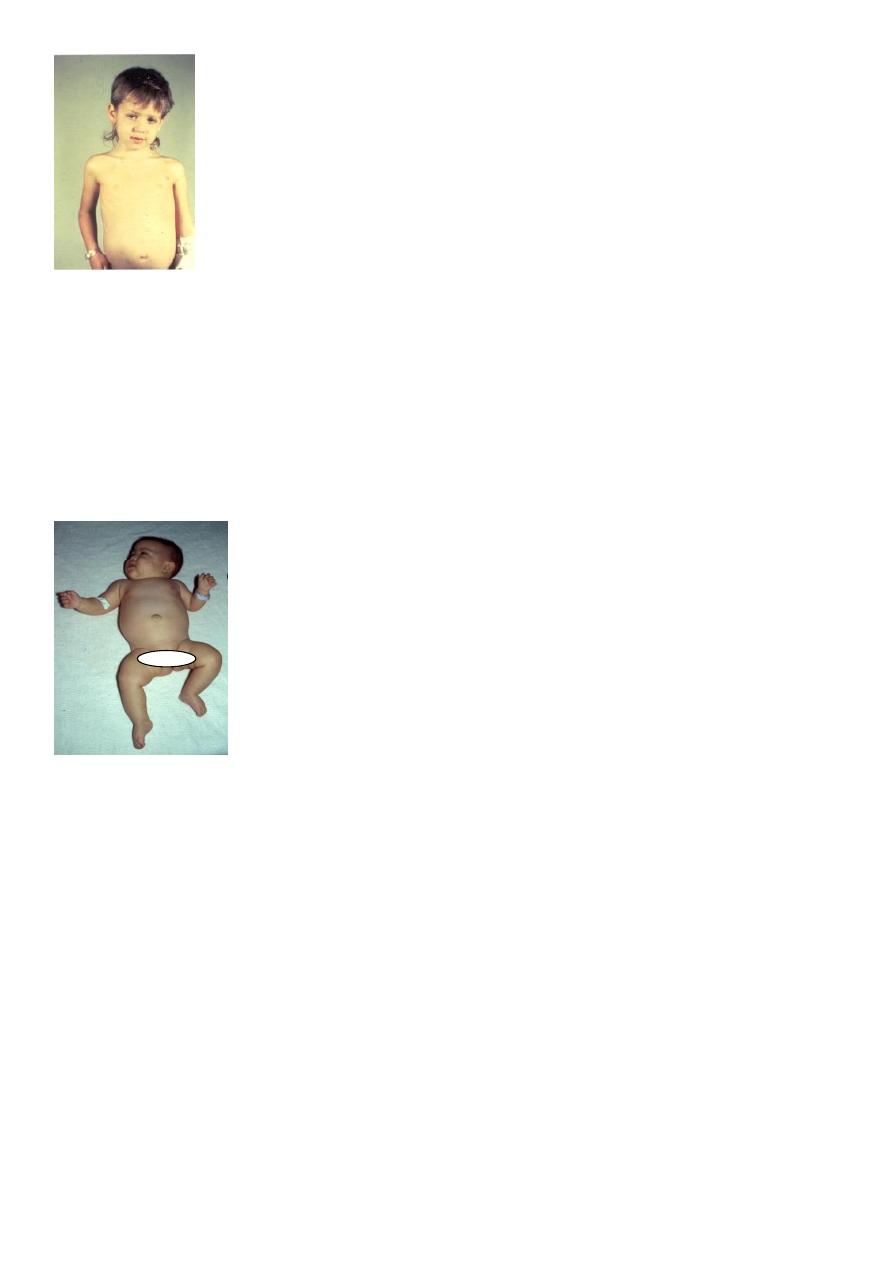
8
Other:
• Hepatoblastoma
• Rhabdomyosarcoma
– pelvic
• Ovarian germ cell tumors
– pelvic
Neuroblastoma
Age
◦ 90% < 5 y/o; 50% < 2 y/o
◦ Occasional ultrasonography detection in utero
Location: any neural crest tissue
◦ Adrenal
◦ Paraspinal sympathetic tissue
Cervical, Thoracic, Pelvic
Often metastatic at diagnosis
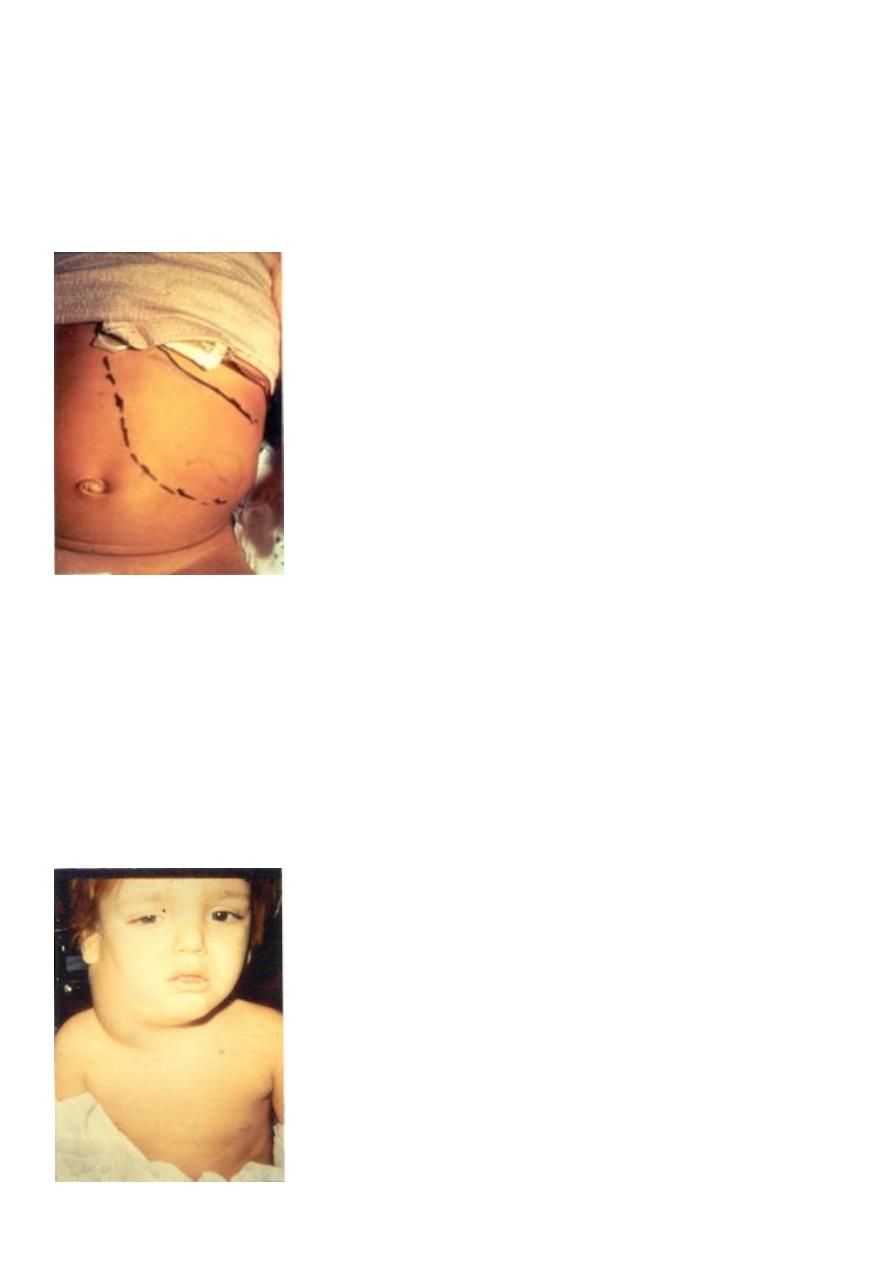
9
◦ Bone and/or bone marrow
Neuroblastoma: Signs and Symptoms
Abdominal mass
◦ Often crosses midline
Lower extremity weakness
◦ Spinal cord compression
Thoracic
abdominal
Cervical, high thoracic mass
◦ Horner’s syndrome
Miosis, ptosis, anhydrosis
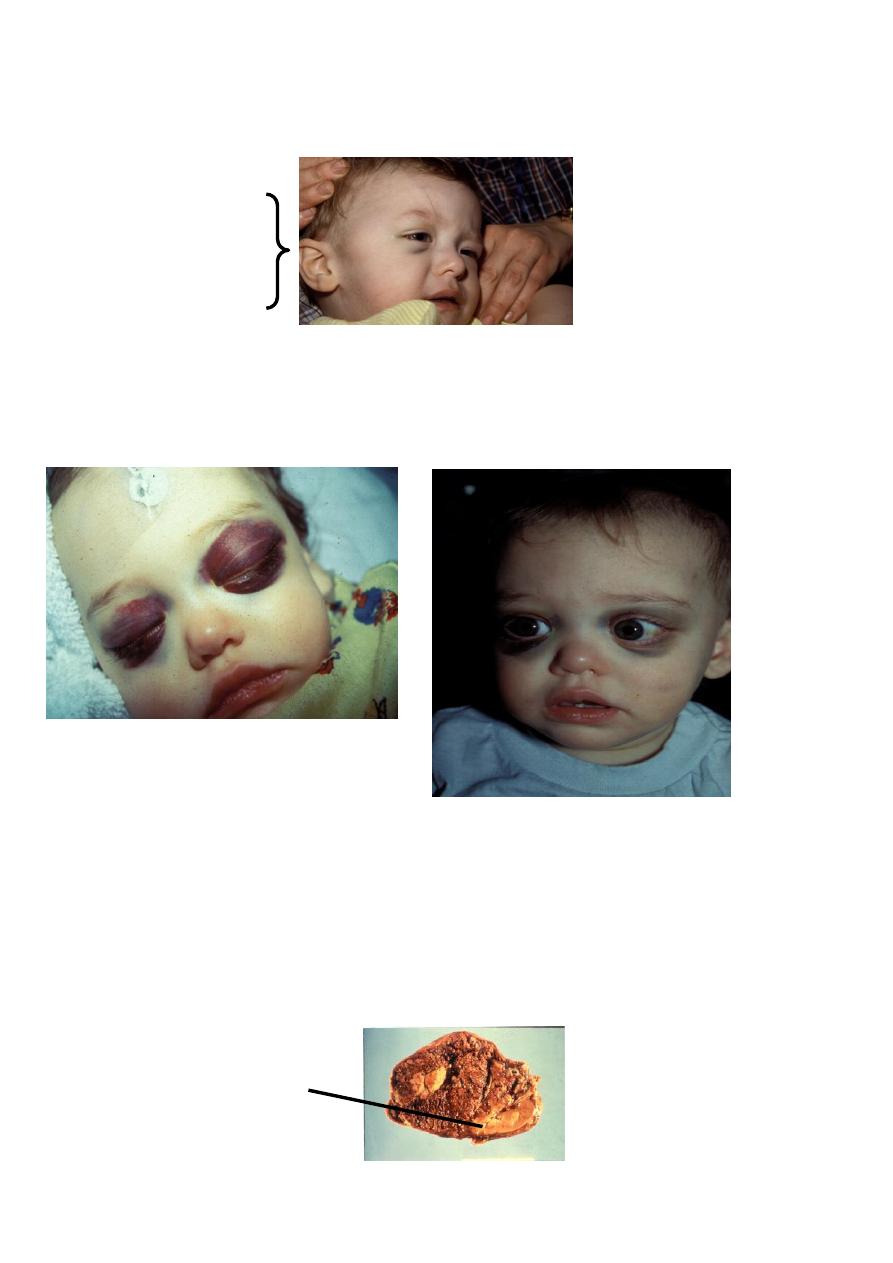
11
Signs of metastatic disease
◦ Irritability
◦ Bone pain
◦ Fever
◦ Proptosis
◦ Bone lesions
◦ Periorbital
ecchymoses
Periorbital Ecchymoses of Neuroblastoma
Paraneoplastic syndromes
◦ Watery diarrhea – Vasoactive Intestinal Peptide
◦
Urinary catecholamines
◦ VMA – 85%
BP – 25%
◦ Renal compression
◦ Catecholamine secretion
13 months old
at diagnosis
1 month into
therapy
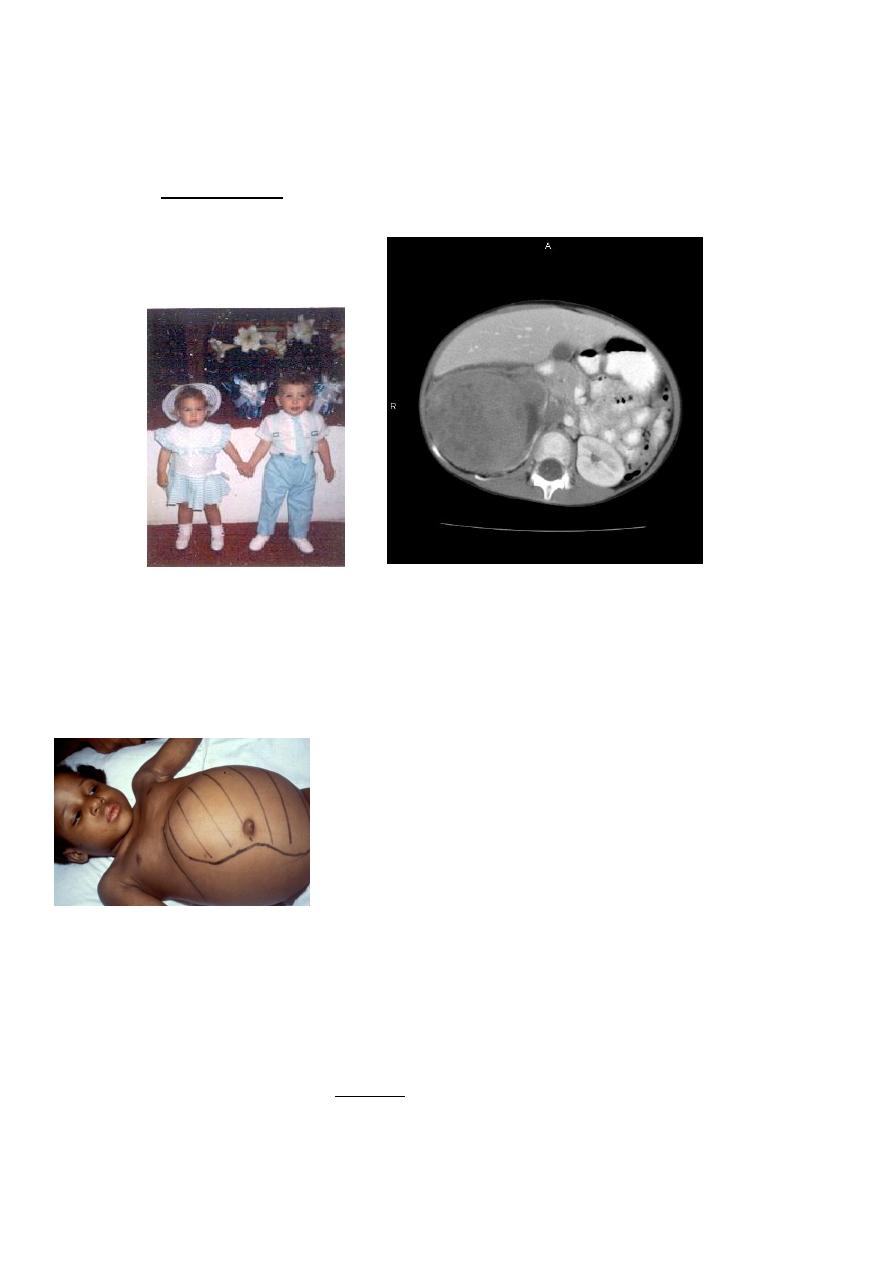
11
Wilms tumor: Signs and Symptoms
Abdominal mass
Often asymptomatic
Healthy appearing
BP – 25%
Mass enlarges toward pelvis
Associated anomalies, syndromes – 15%
◦ WAGR syndrome
Wilms, aniridia, ambiguous genitalia, mental retardation
due to 11p13 deletion (WT-1)
Aniridia
2 days
before
dx
Encapsulated
mass

12
Bone tumors
Bone Tumors in Childhood
Age – Adolescents > younger children
Signs and symptoms
◦ Bone pain, ± palpable mass, ± ¯ motion
Often hx of sports injury (coincidental)
Osteogenic Sarcoma
Metaphyses of long bones:
Distal femur
Proximal tibia
Proximal humerus
Pelvis
Ewing Sarcoma
All bones:
Long: diaphyses
Flat
Pelvis
Skull
Ribs
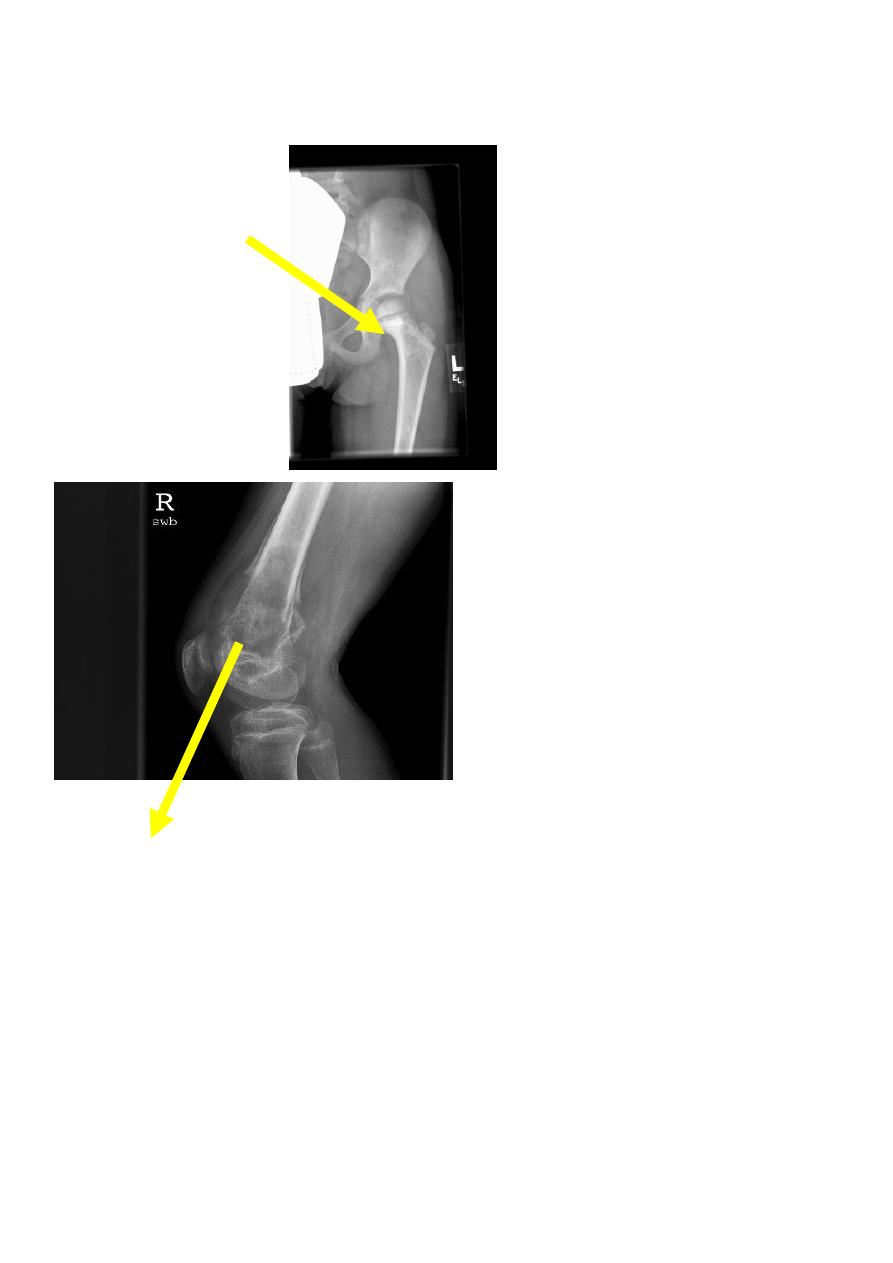
13
Presentation of Bone Tumors
Plain X-Rays are usually abnormal
Classic X-ray
of Ewing:
Moth-eaten
lytic lesion
Classic X-ray of O.S.:
“Sunburst pattern”
Periosteal reaction
Soft tissue mass + calcium
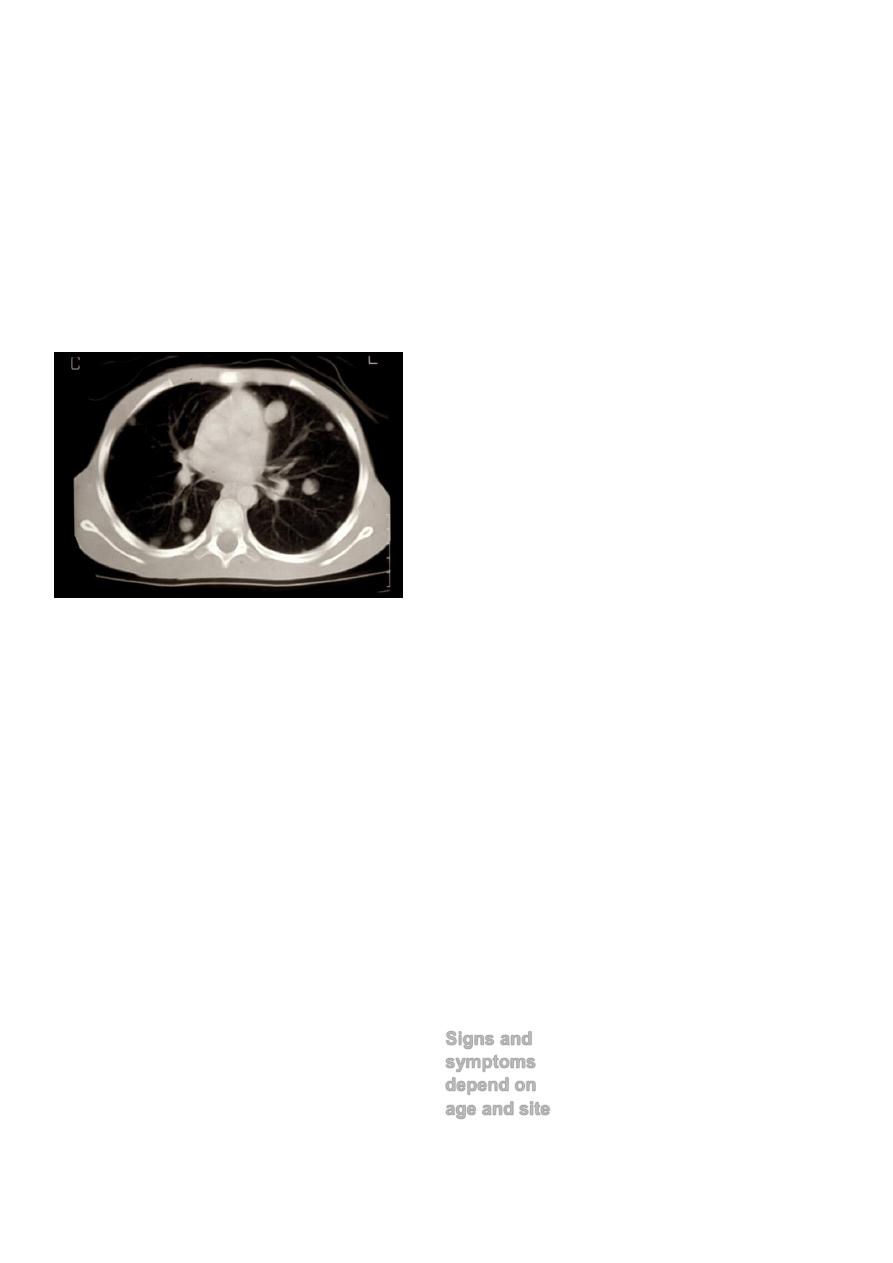
14
Presentation of Bone Tumors
Further radiographic evaluation may help with differential diagnosis of bone
pain
Bone scan
MRI
Chest CT scan
◦ Metastases 20%
Soft tissue sarcomas
Presentation of Soft Tissue Sarcomas
Rhabdomyosarcoma – most common
Age
◦ Birth to > 20 y/o
◦ 70% < 10 y/o
Sites
◦ Head and neck – 40%
◦ Genitourinary – 20%
◦ Extremities – 20%
◦ Trunk – 10%
◦ Retroperitoneal – 10%
Signs and
symptoms
depend on
age and site
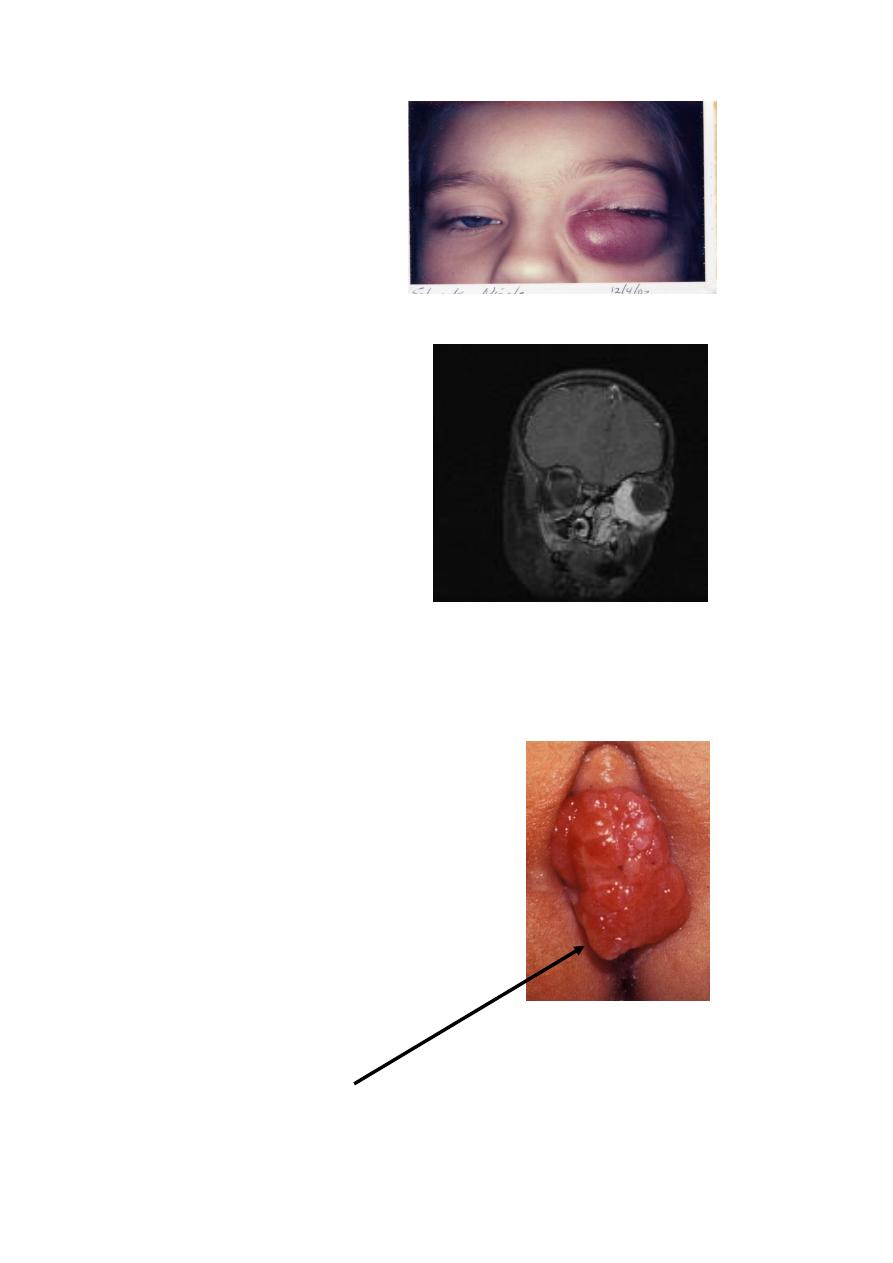
15
Rhabdomyosarcomas: Signs and Symptoms
Head and neck
Orbit
Proptosis
Periorbital swelling
Parameningeal
Cranial nerve palsies
Hearing loss
Chronic aural or sinus drainage
Rhabdomyosarcomas: Signs and Symptoms
Genitourinary
◦ Bladder and prostate
Hematuria
Urinary obstruction
◦ Paratesticular
Painless mass -
testicle
◦ Vagina and uterus
Abdominal mass
Vaginal mass
Vaginal bleeding or discharge
Botryoid:
grape-like

16
Rhabdomyosarcoma – other sites
Can grow up at any site and any age
Sacrococcygeal teratoma
Its a rare tumor, occurring in approximately 1 in 40,000 live births. They arise
from the caudal end of the spine, usually protruding
from the inferior end of the infant’s spinal column and displacing the anus
forwards. They are much more common in girls, with the female to male ratio
being at least 3:1. It is generally agreed that sacrococcygeal teratoma is the
result of continued multiplication of totipotent cells from Hensen’s node, which
fail to involute at the end of embryonic life.
6 week old
Newborn
